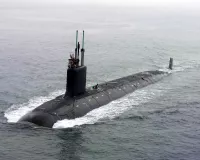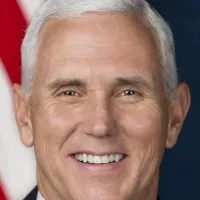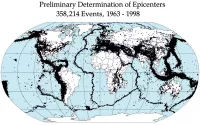American Samoa is an unincorporated territory of the United States in Polynesia, South Pacific. It lies southeast of Samoa, east of the International Date Line, west of the Cook Islands, and north of Tonga. Located 2,200 miles southwest of Hawaii, it's the southernmost U.S. territory and one of only two south of the Equator, along with Jarvis Island. Its geographic coordinates are centered around 14.3°S 170.7°W.
1900: Tutuila becomes a US Territory
In 1900, Tutuila became a territory of the United States as part of the Tripartite Convention of 1899, which partitioned the Samoan Islands.
1900: Deed of Cession of Tutuila
In 1900, the United States Navy secured a Deed of Cession of Tutuila, expanding the coaling station at Pago Pago Bay into a full naval station.
1900: Land Ownership Categories
Since 1900, American Samoa established three land ownership categories: native, individual, and freehold land.
1904: Manuʻa becomes a US Territory
In 1904, Manuʻa officially became a territory of the United States as part of the Tripartite Convention of 1899, which partitioned the Samoan Islands.
1904: Deed of Cession of Manuʻa
In 1904, the United States Navy secured a Deed of Cession of Manuʻa, with the Tui Manuʻa Elisala signing after a series of U.S. naval trials.
May 1911: Governor Crose Conveys Sentiments of Manuʻa
In May 1911, Governor William Michael Crose authored a letter to the Secretary of the Navy conveying the sentiments of Manuʻa regarding the name "Naval Station Tutuila".
July 7, 1911: Solicitor General Authorizes New Name
On July 7, 1911, the solicitor general of the Navy authorized the governor to proclaim the name "American Samoa" for the new territory.
July 17, 1911: U.S. Naval Station Tutuila Renamed
On July 17, 1911, U.S. Naval Station Tutuila, encompassing Tutuila, Aunuʻu, and Manuʻa, was officially renamed American Samoa after the people of Manu'a expressed their unhappiness with the previous name.
December 19, 1912: William Somerset Maugham arrives in Pago Pago
On December 19, 1912, English writer William Somerset Maugham arrived in Pago Pago, a visit that inspired his short story "Rain".
1918: Prevention of Influenza Deaths
In 1918, Governor John Martin Poyer's proactive measures, including requesting quarantine ships, prevented any deaths in American Samoa during the Great Influenza epidemic, earning him the Navy Cross.
November 2, 1921: Naval Governor Terhune's Suicide
On November 2, 1921, American Samoa's 13th naval governor, Commander Warren Jay Terhune, died by suicide in the government mansion in Pago Pago.
June 8, 1922: First Bus Service
On June 8, 1922, the first bus service began operations on Tutuila, known as the ʻaiga bus system.
August 17, 1924: Margaret Mead's Arrival
On August 17, 1924, Margaret Mead arrived in American Samoa to begin fieldwork for her doctoral dissertation, which later became "Coming of Age in Samoa."
1924: First Rugby Game
In 1924, the first rugby game was recorded in American Samoa.
1925: Annexation of Swains Island
In 1925, Swains Island was formally annexed by the United States following the dissolution of the Gilbert and Ellice Islands Colony by the United Kingdom.
1928: Publication of Coming of Age in Samoa
In 1928, Margaret Mead published her work "Coming of Age in Samoa", sparking years of intense debate and controversy.
1929: Ratification Act
In 1929, the Ratification Act vested all civil, judicial, and military powers in the President of the United States regarding American Samoa.
1930: Congressional Investigation
In 1930, the U.S. Congress sent a committee to investigate the status of American Samoa, comprised of Americans who had participated in the overthrow of the Kingdom of Hawaii.
1932: Frank Solomon plays for New Zealand
In 1932, Frank Solomon scored a try against Australia in the inaugural Bledisloe Cup match, which New Zealand won 21–13.
1938: Death of Ed Musick
In 1938, aviator Ed Musick and his crew died when the Pan American World Airways S-42 Samoan Clipper exploded over Pago Pago during a survey flight.
1938: Fair Labor Standards Act
Since its inception in 1938, the Fair Labor Standards Act has contained special provisions for American Samoa, citing its limited economy.
November 24, 1939: Last Execution
On November 24, 1939, American Samoa's last execution to date was carried out, with Imoa of Fagatogo hanged for the murder of Sella.
January 13, 1942: Japanese Submarine Attack
On January 13, 1942, a Japanese submarine attacked the U.S. Naval Station Tutuila, causing minor damage and a few injuries; it was the only time the Japanese attacked Tutuila during World War II.
August 24, 1943: Eleanor Roosevelt's Visit
On August 24, 1943, First Lady Eleanor Roosevelt visited American Samoa, inspecting the Fita Fita Guard and Band and the First Samoan Battalion of U.S. Marine Corps Reserve.
1943: Eleanor Roosevelt's Visit
In 1943, Eleanor Roosevelt visited American Samoa, becoming the first First Lady to visit the territory.
1949: Defeat of Organic Act 4500
In 1949, Organic Act 4500, an attempt to incorporate American Samoa, was defeated primarily through the efforts of Samoan chiefs, leading to the creation of the American Samoa Fono.
1950: Department of Interior Administration
In 1950, the Department of the Interior began to administer American Samoa after the defeat of Organic Act 4500.
1951: Executive Order 10264
In 1951, President Harry Truman delegated his authority over American Samoa to the Secretary of the Interior through Executive Order 10264.
1956: First Locally Elected Governor
In 1956, Peter Tali Coleman replaced the U.S. Navy-appointed governor, becoming the first locally elected governor of American Samoa.
1961: First High School
In 1961, American Samoa had one high school due to the matai's influence.
June 21, 1963: Tuli Leʻiato sworn in as Secretary of Samoan Affairs
On June 21, 1963, Paramount Chief Tuli Leʻiato was sworn in as the first Secretary of Samoan Affairs by Governor H. Rex Lee.
1964: Public Television System Introduced
In 1964, Governor H. Rex Lee introduced the public television system in American Samoa for educational reformation.
January 1966: Dredge Palolo Hired for Utulei Beach
In January 1966, the dredge Palolo was hired from Upolu in order to dredge sand for Utulei Beach. Ala Varone of the Army, a specialist in beach developments, directed the project.
October 18, 1966: Lyndon B. Johnson's Visit
On October 18, 1966, President Lyndon B. Johnson and First Lady Lady Bird Johnson visited American Samoa; Mrs. Johnson dedicated the "Manulele Tausala" Elementary School.
1966: American Samoa Constitution Ratified
In 1966, American Samoa's constitution was ratified.
June 2, 1967: Revised Constitution of American Samoa
On June 2, 1967, Interior Secretary Stewart Udall promulgated the Revised Constitution of American Samoa, effective July 1, 1967.
July 1, 1967: Constitution Effective
On July 1, 1967, American Samoa's self-governing constitution became effective, although the territory remains technically "unorganized."
1967: Self-Governing Constitution
In 1967, American Samoa adopted a constitution, becoming self-governing with separate executive, legislative, and judicial branches.
1967: Constitution took effect
In 1967, American Samoa's constitution came into effect after being ratified in 1966.
1968: New High Schools Established
By 1968, three new high schools were established in American Samoa.
November 1970: Pope Paul VI's Visit
In November 1970, Pope Paul VI visited American Samoa, receiving a brief but lavish greeting.
1970: American Samoa Community College Founded
In 1970, American Samoa Community College was founded, providing post-secondary education on the islands.
1971: Mead Returns to American Samoa
In 1971, Margaret Mead returned to American Samoa for the dedication of the Jean P. Haydon Museum.
1972: Designation of National Natural Landmarks
In 1972, American Samoa's seven National Natural Landmarks (NNL) were designated. This program is administrated by the U.S. National Park Service and the areas contain unique ecological or geological features.
January 30, 1974: Pan Am Flight 806 Crash
On January 30, 1974, Pan Am Flight 806 crashed at Pago Pago International Airport, killing 86 of the 91 people on board. The crash was attributed to poor visibility, pilot error, or wind shear during a violent storm.
1975: Discovery of Vailuluʻu Seamount
In 1975, the Vailuluʻu seamount, an active submerged volcano, was discovered east of Taʻū in American Samoa.
1976: Western Samoa joins the United Nations
In 1976, Western Samoa joined the United Nations under the name of Samoa.
1978: Creation of Delegate's Office
In 1978, the office of the non-voting delegate to the United States House of Representatives was created for American Samoa.
1979: Student Attendance Count
By 1979, 2,800 high school students were attending six public and private high schools in American Samoa.
April 17, 1980: U.S. Navy Plane Crash during Flag Day
On April 17, 1980, during Flag Day celebrations, a U.S. Navy P-3 Orion patrol plane crashed after hitting the Solo Ridge-Mount Alava aerial tramway cable. The crash killed all six crew members and one civilian.
1980: Craddick v. Territorial Registrar
In 1980, the Appellate Division of the High Court of American Samoa ruled in Craddick v. Territorial Registrar that land ownership laws, while racially based, did not violate equal protection and due process guarantees.
1980: Creation of Department of Parks and Recreation
In 1980, the Department of Parks and Recreation was created by law, and the Parks Commission was also established.
1981: Educational Programs Decline
By 1981, only one educational television series was still aired in American Samoa.
1981: Fofō Iosefa Fiti Sunia elected as delegate
In 1981, Fofō Iosefa Fiti Sunia was elected as the delegate for American Samoa.
1981: Fuga Tolani Teleso Appointed Director of Parks and Recreation
In 1981, Governor Peter Tali Coleman appointed Fuga Tolani Teleso as Director of Parks and Recreation.
1982: Samoa Cup Win
In 1982, American Samoa won the Samoa Cup at the Hobie World Championship in Tahiti.
1982: Diocese of Samoa-Pago Creation
In 1982, the Diocese of Samoa-Pago was created by Pope John Paul II.
1983: Regional Volleyball Win
In 1983, a team from American Samoa won the Regional women's volleyball tournament in Hawaii.
1983: Taxation Citizenship Ruled Unconstitutional
In 1983, the use of citizenship in taxation by American Samoa was ruled unconstitutional due to its incorporation of the U.S. tax code.
May 25, 1984: Groundbreaking Ceremony for First Park in Eastern District
On May 25, 1984, a groundbreaking ceremony was held at the Onesosopo reclamation to initiate work on the first park in the Eastern District.
1984: Bill Introduced to Enter American Samoa into Federal Fish and Wildlife Restoration Act
In 1984, at the urging of Paul Cox, High Chief Nafanua of Falealupo, and the Bat Preservers Association, Congressman Fofō Iosefa Fiti Sunia introduced a bill in 1984 which would enter American Samoa into the Federal Fish and Wildlife Restoration Act.
July 1987: National Park Service Establishes Federal Park
In July 1987, the National Park Service began establishing a federal park, the National Park of American Samoa.
1987: IOC Membership
In 1987, American Samoa became the 167th member of the International Olympic Committee.
November 1, 1988: American Samoa National Park Created
On November 1, 1988, President Ronald Reagan signed a bill creating American Samoa National Park.
1988: First Match
In 1988, America Samoa's first match in the international Rugby League was in the Pacific Cup against Tonga, Tonga won the match 38–14.
1988: Fofō Iosefa Fiti Sunia's term ends
In 1988, Fofō Iosefa Fiti Sunia's term as delegate for American Samoa came to an end.
1989: Eni Faleomavaega elected as delegate
In 1989, Eni Faleomavaega was elected as the delegate for American Samoa.
1989: Initial Appropriation for National Park
In 1989, an initial appropriation of $400,000 was made for the National Park of American Samoa.
January 1990: South Pacific Junior Tennis Tournament
In January 1990, the first South Pacific Junior Tennis Tournament was held at the Tafuna courts in American Samoa.
1990: American Samoa Rugby Union Founded
In 1990, the American Samoa Rugby Union was founded.
1990: American Samoa's forest cover in 1990
In 1990, the total forest area in American Samoa was 18,070 hectares (ha).
September 19, 1991: Formalizing the Establishment of the Fiftieth U.S. National Park
On September 19, 1991, Governor Peter Tali Coleman and Department of the Interior secretary Manuel Lujan signed leases formalizing the establishment of the fiftieth U.S. National Park.
1992: Ban on Hunting of Fruit Bats
In 1992, the American Samoa Government banned the hunting of fruit bats to help their populations recover.
1992: Pacific Cup Competition
In 1992, the American Samoa national rugby league team competed in the Pacific Cup competition.
1992: Ban on Pigeon Hunting
In 1992, the local government banned all pigeon hunting in American Samoa.
May 1993: Mini Games Bid Approved
In May 1993, the bid to host the South Pacific Mini Games for 23 participating countries was approved in American Samoa.
January 1994: Groundbreaking for Games Stadium
In January 1994, groundbreaking occurred for the stadium to host the South Pacific Mini Games in American Samoa.
1995: Samoa Flying Fox Population Stable
From 1995 to 2000, the population of Samoa flying fox remained stable at about 900 animals on Tutuila, and 100 in the Manuʻa Islands.
July 1997: Western Samoa Renamed Samoa
In July 1997, Western Samoa amended its constitution, changing the country's name to Samoa, a move protested by American Samoa.
1997: South Pacific Mini Games
The 1997 South Pacific Mini Games were the biggest international event ever to take place in American Samoa.
1998: Pacific Cup Competition
In 1998, the American Samoa national rugby league team competed in the Pacific Cup competition.
August 13, 1999: UN Observer Seat
On August 13, 1999, the United Nations granted American Samoa "observer seat" status.
1999: Merchant Marine Estimate
According to a 1999 estimate, the territory of American Samoa had no merchant marine.
2000: Estimation of Pacific and Samoa Flying Foxes
As of 2000, scientists from the American Samoa Department of Marine and Wildlife Resource estimated that there are fewer than 5,500 Pacific flying foxes in American Samoa, and an estimated 900 or fewer Samoa flying foxes.
2000: Tax Code in Effect
As of 2000, the government of American Samoa taxes the worldwide income of its residents and the income generated there by nonresidents, largely under the same rules and rates as the U.S. tax code in effect in 2000, with some modifications.
2000: Polamalu's Hair
Starting in 2000, Troy Polamalu stopped cutting his hair in honor of his heritage.
2001: Unsuccessful Decolonization Removal Attempt
In 2001, the United States unsuccessfully sought to remove American Samoa from the United Nations' decolonization list, arguing that the territory should not be considered a colony.
2002: Population Increase and GDP Per Capita Decrease
From 2002 to 2007, the population of American Samoa increased at an average annual rate of 2.3 percent.
2002: GDP increase
From 2002 to 2007, the real GDP of American Samoa experienced an average annual increase of 0.4 percent.
2003: World Sevens Qualifier
In 2003, the American Samoa national rugby league team competed in the World Sevens qualifiers.
2003: Unsuccessful Decolonization Removal Attempt
In 2003, the United States unsuccessfully sought to remove American Samoa from the United Nations' decolonization list, arguing that the territory should not be considered a colony.
2004: Kaino's First Match
In 2004, Jerome Kaino played his first match for New Zealand against the Barbarians, scoring his first try.
2004: Pacific Cup Competition
In 2004, the American Samoa national rugby league team competed in the Pacific Cup competition.
2005: World Sevens Qualifier
In 2005, the American Samoa national rugby league team competed in the World Sevens qualifiers.
2005: Unemployment Rate
In 2005, the unemployment rate in American Samoa was 29.8%.
2007: GDP increase
From 2002 to 2007, real GDP of American Samoa increased at an average annual rate of 0.4 percent.
2007: Population Increase and GDP Per Capita Decrease
From 2002 to 2007, real GDP per capita in American Samoa decreased at an average annual rate of 1.9 percent, while the population increased.
2007: Fair Minimum Wage Act of 2007
In 2007, the Fair Minimum Wage Act of 2007 was passed, which was set to increase the minimum wage in American Samoa by 50¢ per hour in 2007, with incremental increases each year until it matched the federal minimum wage.
2007: Samoan economy highlighted in Congress
In early 2007, the Samoan economy was highlighted in the U.S. Congress at the request of Eni Faleomavaega concerning the minimum wage bill.
2008: Highway Estimate
In 2008, American Samoa was estimated to have 150 miles (240 km) of highways.
September 28, 2009: Earthquake and Tsunami
On September 28, 2009, an 8.1 magnitude earthquake struck off the coast of American Samoa, generating a tsunami that caused significant damage and killed more than 170 people in the Samoa Islands and Tonga.
2009: Samoa Packing Closes
In 2009, Samoa Packing, a Chicken of the Sea subsidiary, closed, citing minimum wage increases and foreign competition.
2009: Chicken of the Sea Plant Shutdown
In 2009, the Chicken of the Sea tuna canning plant shut down in American Samoa, resulting in the layoff of 2,041 employees, in response to the minimum wage increase.
January 17, 2010: 60 Minutes Feature
The football culture of American Samoa was featured on 60 Minutes on January 17, 2010.
July 22, 2010: Detective Lieutenant Lusila Brown Fatally Shot
On July 22, 2010, Detective Lieutenant Lusila Brown was fatally shot outside the High Court building in Fagatogo, marking the first police officer killed in the line of duty in over 15 years.
August 2010: StarKist Layoffs Begin
In August 2010, StarKist, another major tuna canning plant in American Samoa, began laying off workers, planning to lay off a total of 800 employees due to minimum wage increases and other rising costs.
November 8, 2010: Hillary Clinton Refuels at Pago Pago
On November 8, 2010, United States Secretary of State Hillary Clinton made a refueling stopover at the Pago Pago International Airport, where she was greeted by dignitaries and received gifts and a traditional kava ceremony.
2010: Religious Affiliations Estimate
According to a 2010 CIA Factbook estimate, the religious affiliations of American Samoa were 98.3% Christian.
2010: Unemployment Rate Improved
In 2010, the unemployment rate in American Samoa improved to 23.8%.
2010: Constitutional Amendments Rejected
In 2010, voters rejected a package of amendments to the territorial constitution that would have restricted legislative eligibility based on Samoan ancestry.
2011: Rugby World Cup
In 2011, Jerome Kaino played a crucial role in the Rugby World Cup, leading to New Zealand winning the final.
2012: Tuaua v. United States Lawsuit
In 2012, a group of American Samoans sued the federal government in the case Tuaua v. United States, seeking recognition of birthright citizenship.
2012: Internet in American Samoa
In 2012, it was reported that American Samoa had the most expensive internet of any U.S. territory, with speeds comparable to dial-up in the U.S. mainland during the 1990s, and many residents couldn't afford high-speed internet.
2012: Union Affiliation
In 2012, the American Samoa Rugby Union became affiliated with the IRB.
2012: Calls for Autonomy or Independence
In 2012, the Governor and American Samoa's delegate to the U.S. Congress, Eni Faleomavaega, advocated for the populace to consider autonomy or independence, resulting in a mixed response.
2013: Balanced Import and Export Ratio
According to figures as of 2013, the ratio between import and export in American Samoa is almost balanced.
January 2014: Filming documentary about 1974 crash
In January 2014, filmmaker Paul Crompton visited American Samoa to interview residents for a documentary about the 1974 Pan Am Flight 806 crash.
2014: Next Goal Wins
In 2014, the American Samoan national team features in the British film Next Goal Wins.
June 2015: Court Affirms No Birthright Citizenship in Territories
In June 2015, the U.S. Court of Appeals affirmed that Fourteenth Amendment citizenship guarantees did not apply to persons born in unincorporated territories.
August 2015: Coach Selected
In August 2015, Leota Toma Patu was selected as the coach for the Talavalu 15 men's team that represented American Samoa at the Ocean Cup 2015 in Papua New Guinea.
2015: American Samoan NFL Players
As of 2015, there were thirty players from American Samoa in the National Football League (NFL).
2015: Forest ownership
For the year 2015, 0% of the forest area was reported to be under public ownership, 100% private ownership and 0% with ownership listed as other or unknown.
2015: Aumua Amata Radewagen elected as delegate
In 2015, Aumua Amata Radewagen was elected as the delegate for American Samoa.
2016: GDP per capita (PPP)
As of 2016, American Samoa's GDP per capita (PPP) was $11,200.
2016: NFL Exporter
At the 2016 Republican National Convention, American Samoa's delegation said American Samoa is "the greatest exporter of NFL players".
April 2017: Mike Pence visits Pago Pago
In April 2017, Vice President Mike Pence made a stopover in Pago Pago and addressed 200 soldiers during his refueling stop.
June 3, 2017: Rex Tillerson Visits American Samoa
On June 3, 2017, U.S. Secretary of State Rex Tillerson visited American Samoa.
2017: GDP Decrease
In 2017, the GDP in American Samoa decreased by 5.8%.
2018: GDP Increase
In 2018, the GDP in American Samoa increased by 2.2%.
December 2019: District Judge Strikes Down Law
In December 2019, U.S. District Judge Clark Waddoups struck down 8 U.S.C. § 1408(1) as unconstitutional, asserting that "Persons born in American Samoa are citizens of the United States by the Citizenship Clause of the Fourteenth Amendment".
2020: GDP
In 2020, American Samoa's GDP was $709 million.
2020: American Samoa's forest cover in 2020
In 2020, forest cover in American Samoa totaled 17,130 hectares, down from 18,070 hectares in 1990.
2020: Census Ethnicity Report
In the 2020 census, 89.4% of the population of American Samoa reported at least partial Samoan ethnicity.
July 20, 2021: Legislature Supports Court Decision
On July 20, 2021, the Legislature of American Samoa unanimously passed a resolution supporting the 10th Circuit Court's decision to reverse the district court's ruling regarding citizenship.
2021: Highest Rate of Military Enlistment
As of 2021, the U.S. Army recruiting station in Pago Pago ranked first in recruitment, underscoring the territory's significant military presence.
2022: Population Estimate
As of 2022, the population of American Samoa was estimated to be around 45,443 people.
2022: Official Languages Designated
In 2022, Samoan and English were designated as the official languages of the territory of American Samoa.
April 2023: Latter-day Saints Membership
As of April 2023, The Church of Jesus Christ of Latter-day Saints website claims a membership of 16,512 in American Samoa.
2023: Next Goal Wins Film Adaptation
In 2023, a feature film adaptation of the documentary "Next Goal Wins" was released.
2024: 2024 Population Estimate
In 2024, the population of American Samoa is approximately 47,400, with most residents being indigenous ethnic Samoans primarily located on Tutuila.
Mentioned in this timeline

Hillary Diane Rodham Clinton is an American politician lawyer and...

A submarine is a watercraft capable of independent operation underwater...
New Zealand is an island country located in the southwestern...

Michael Richard Pence is an American politician and lawyer He...

An earthquake is the shaking of the Earth's surface caused...
Australia officially the Commonwealth of Australia encompasses the Australian mainland...
Trending

6 months ago Coby White Trade Rumors: Magic Offer Declined, High Trade Interest Reported.
Byrum Brown is an American college football quarterback currently playing for the South Florida Bulls His primary role is as...
Celtic F C is a professional football club based in Glasgow Scotland competing in the Scottish Premiership Founded in to...

Jared Isaacman is an American billionaire entrepreneur known for founding Draken International a private air force provider and Shift Payments...
Susan Boyle is a Scottish singer who gained international recognition after her appearance on Britain's Got Talent in Her performance...
2 months ago ACA Subsidies Expiration Fuels Premium Fears Amid Government Shutdown, Impacting Covered California
Popular

Candace Owens is an American conservative political commentator and author...

Ilhan Omar is an American politician currently serving as the...

XXXTentacion born Jahseh Dwayne Ricardo Onfroy was a controversial yet...

Tucker Carlson is an American conservative political commentator known for...

Charles James Charlie Kirk was a prominent American right-wing political...

Frederick Christ Trump Sr - was an American real estate...